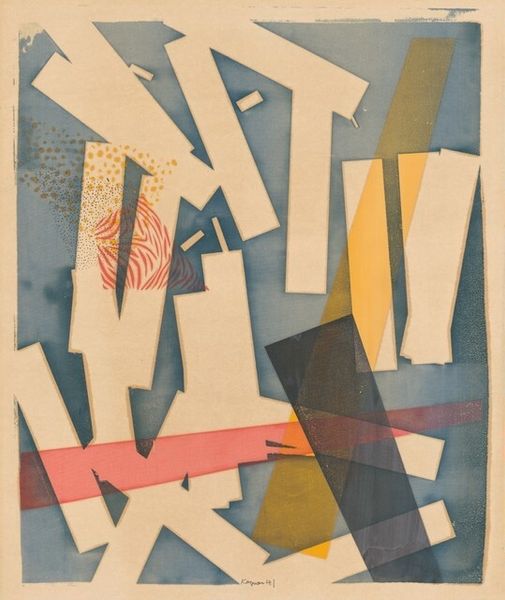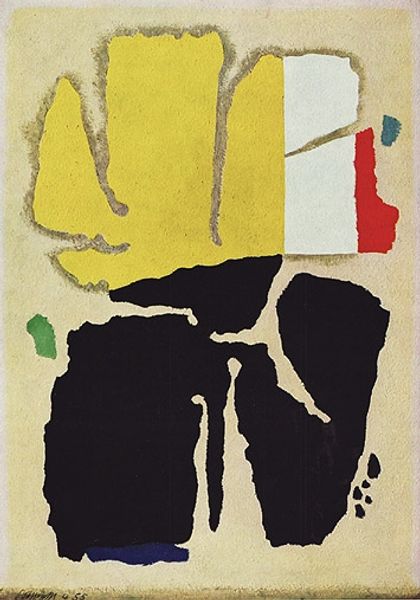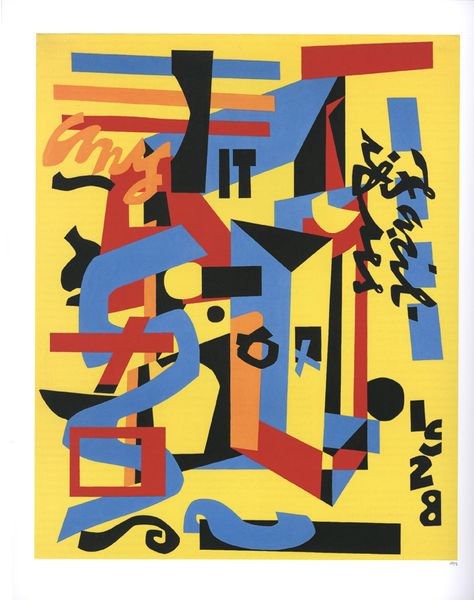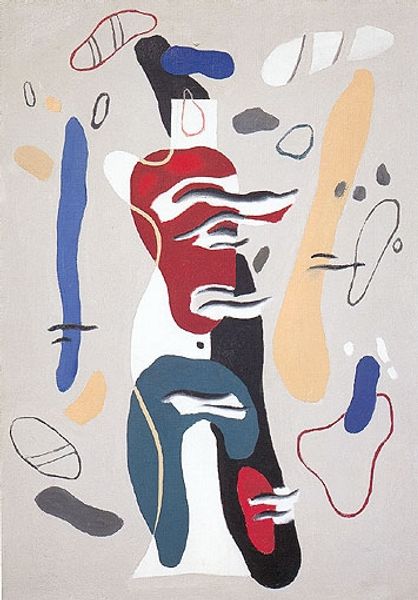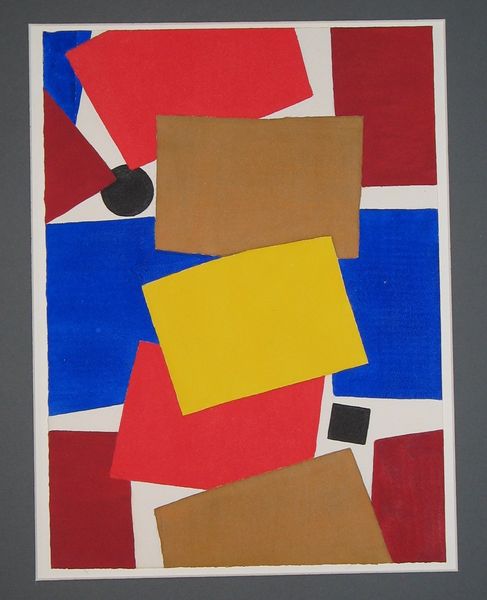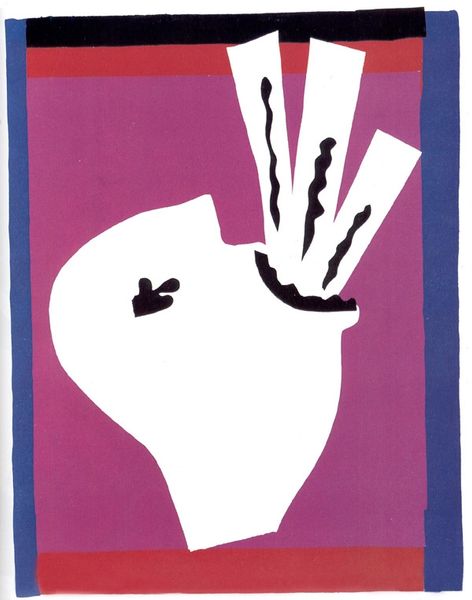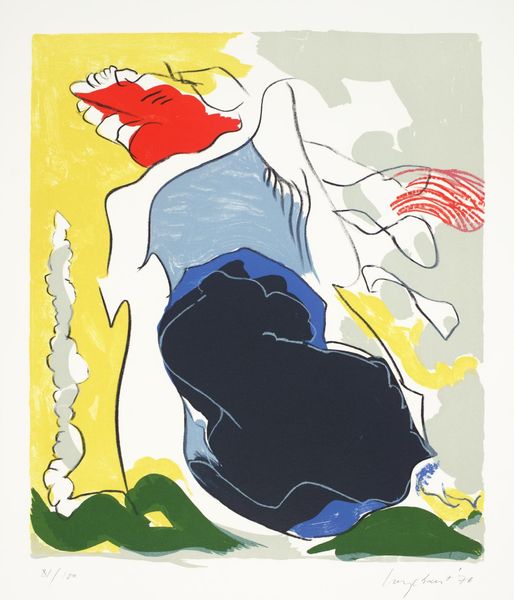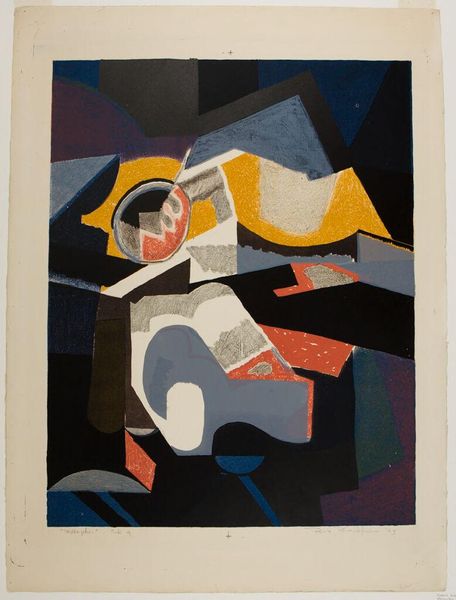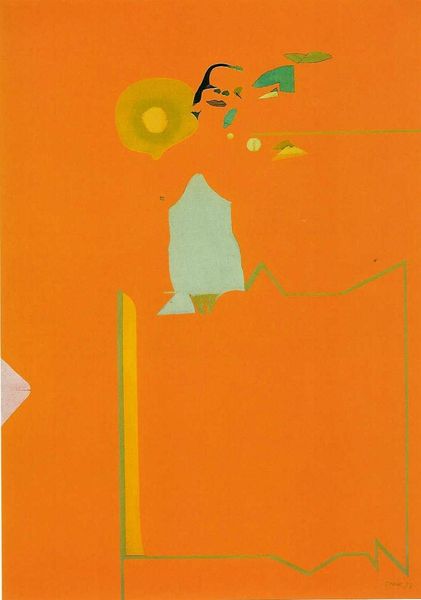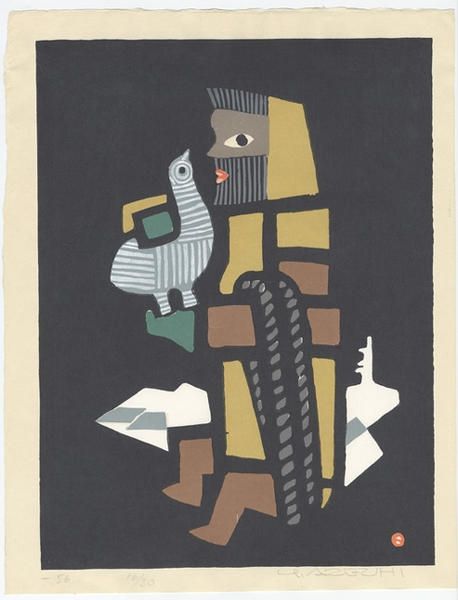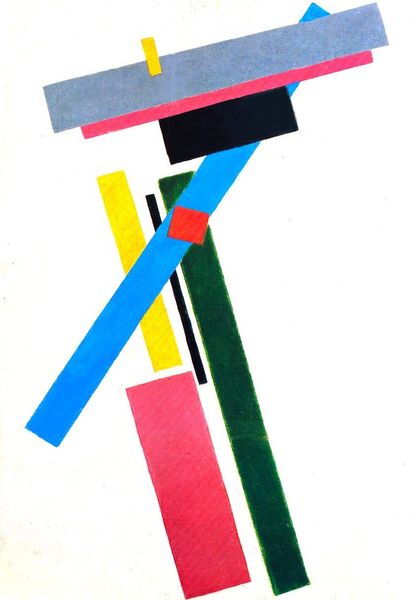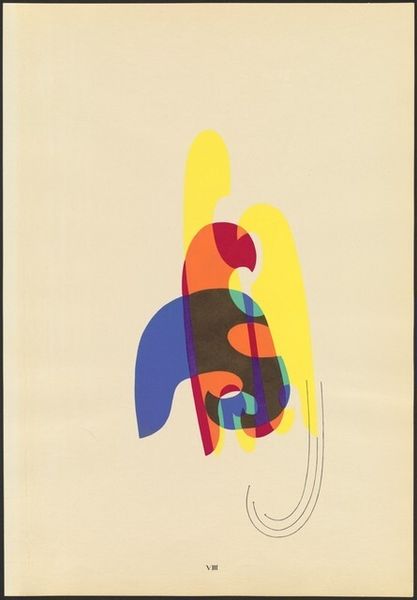
mixed-media, collage
#
mixed-media
#
collage
#
non-objective-art
#
caricature
#
pop art
#
geometric-abstraction
#
abstraction
Copyright: Andre Lanskoy,Fair Use
Editor: Andre Lanskoy's mixed-media collage, "Diary of a Madman - 39", is such a vibrant piece. The yellow background really makes the other colors pop. It’s interesting how geometric and abstract shapes form these sort of totemic structures. What do you see in this piece from your perspective? Curator: For me, this piece immediately draws attention to its production. The cut-and-paste methodology, inherent to collage, speaks volumes about resourcefulness in artmaking. Lanskoy’s choice of materials—likely scraps, found papers, perhaps even remnants from a print shop—foregrounds the socio-economic realities that often underpin artistic creation. The means of production themselves become part of the narrative, no? Editor: That's interesting, I didn’t really think about where he got the materials from, but that makes sense. So, you're saying the art materials are part of the story he is telling? Curator: Precisely. How does the materiality – the textures, the overlaps, the distressed edges of these collage elements – contribute to the feeling of “madness” implied in the title? It challenges the clean lines of formal abstraction by highlighting the gritty, imperfect process of its making. Also, the use of readily available materials democratizes the art-making process itself, disrupting the hierarchy between traditional fine arts and everyday creativity. Editor: So, the kind of materials used changes our understanding? I'm also wondering, why collage? Does the technique hold significance here? Curator: Collage, unlike painting, actively incorporates pre-existing cultural materials into its framework. By doing so, Lanskoy invites us to question notions of originality, authenticity, and authorship that traditionally govern our understanding of art. Consider, for instance, the role of labor in producing those scraps of paper; these weren’t born in a vacuum. Editor: So, in closing, the artist uses these inexpensive and pre-used materials to disrupt ideas about the meaning of art and invite the viewer to look closely at where the medium of expression actually comes from? Curator: Precisely. It reframes our gaze from a purely aesthetic experience to one that considers the social life of objects and the economic realities shaping artistic production. A potent reflection, indeed.
Comments
No comments
Be the first to comment and join the conversation on the ultimate creative platform.
